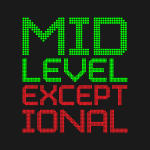The NBA’s Hard Cap: An Introduction
The NBA stands out in the world of North American professional sports leagues because of its soft salary cap. While the league has a top-line salary cap number like the NFL, franchises can and often do exceed that number using tools like the Mid-Level Exception and Bird rights. We saw that softness in awesome effect as the Brooklyn Nets racked up an astounding luxury tax bill last season.
While we often focus on the cap and the luxury tax due to their larger day-to-day importance, there are circumstances where the NBA’s signature soft cap becomes more like the NFL’s. In the current Collective Bargaining Agreement, the owners and players agreed to a system where teams over the luxury tax “apron” (always exactly $4 million above the luxury tax line) have fewer tools at their disposal to build their teams. Those limitations include a smaller Mid-Level Exception, no access to the Bi-Annual Exception, and an inability to receive a player via sign-and-trade. (For a full list, check out the incomparable Larry Coon’s CBAFAQ)
When they worked out this change, it was apparent that a system with this structure would need a way of preventing teams from using the mechanisms available to teams under the apron and then going over the apron to effectively game the system. The solution the league and the NBAPA came up with was that the use of any one of the three tools listed above — higher MLE, BAE, or sign-and-trade — triggers hard cap at the apron for that franchise for the remainder of that league year (until the next June 30, basically). That means the team in question cannot have a cap number over the apron for any reason whatsoever — no wiggle room for a minimum salary guy or to replace an injured player.
In the last few years, we have seen this affect a few different franchises in material ways. Arguably the most notable example came last year when the Golden State Warriors cleared the space to sign Andre Iguodala outright but then negotiated with Denver to make his acquisition a sign and trade. Structuring the deal that way gave the Warriors additional flexibility because they did not have to renounce their MLE and other exceptions, but it also put the hard cap on the team for the entire 2013-14 season.
Incidentally, the Warriors may end up being the next prominent example of the hard cap with the reported signing of Shaun Livingston. Since the reported deal would be for the full MLE (not the reduced one for teams over the apron), that triggers the hard cap. If Brooklyn had the ability to sign Livingston to his deal (which they do not for an even more rare CBA issue), Golden State could also acquire Livingston via sign and trade using their gigantic trade exception generated in the aforementioned Iguodala trade, but that deal would also bring with it the hard cap so no dice.
While we do not know exactly where the salary cap, luxury tax, and apron/hard cap lines will be for the 2014-15 season yet, we do know that the Warriors will be close to it (back of the envelope calculations have them about $6m below the tax right now, using the most recent projected cap and tax lines) because of their present commitments. That additional restriction plays a factor in Golden State’s potential acquisition of Kevin Love since they would be required to stay under the apron before, during, and after the trade no matter how willing ownership may be to take on additional salary to make the trade happen.
Since the MLE and sign-and-trades can be such useful ways for teams with limited flexibility to improve, general managers and fans alike must be aware of this important trade-off in the current CBA.


